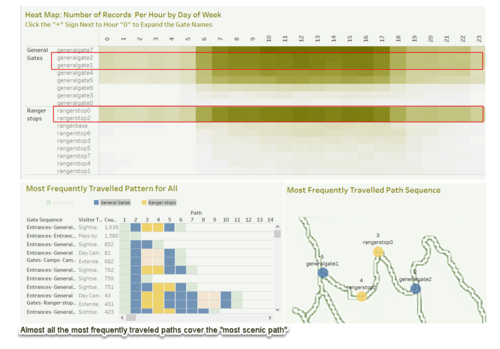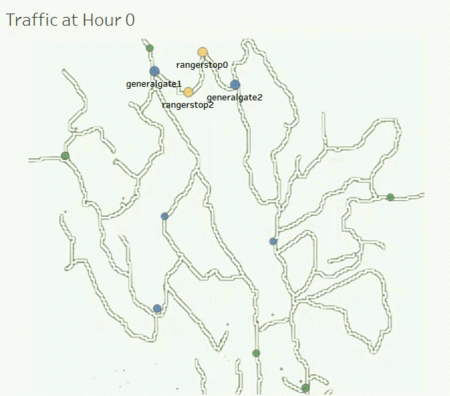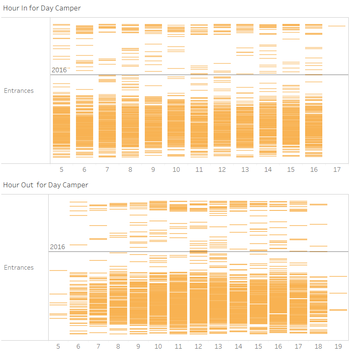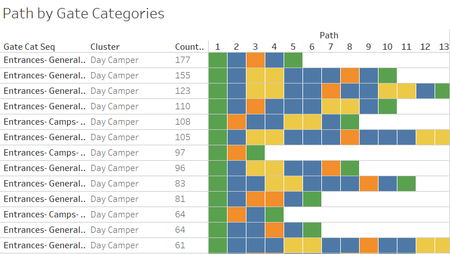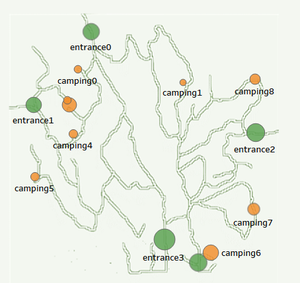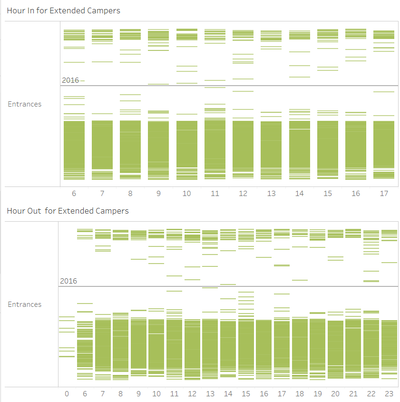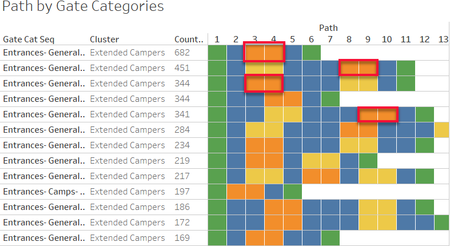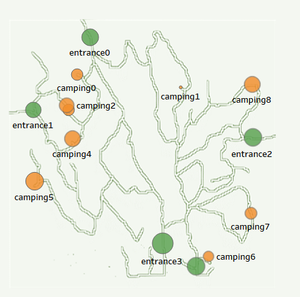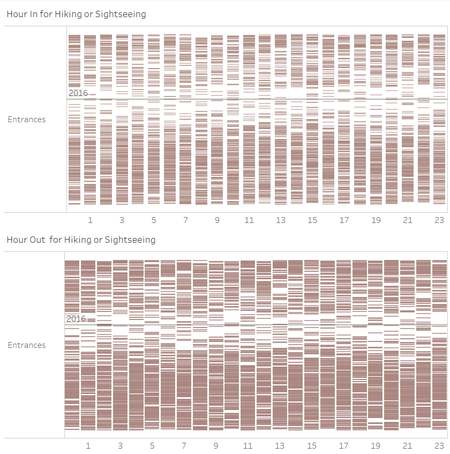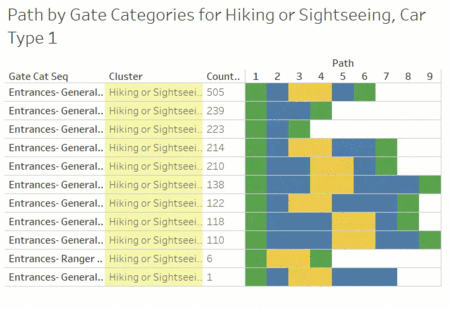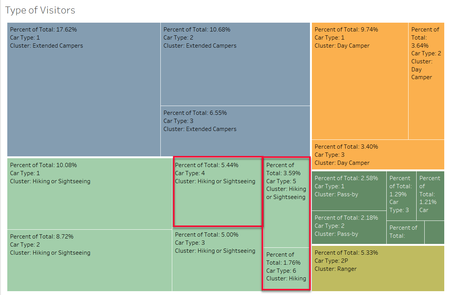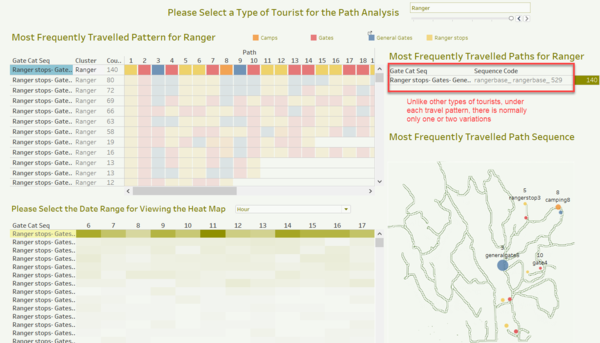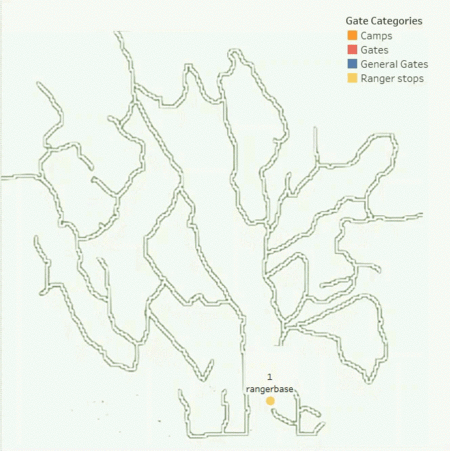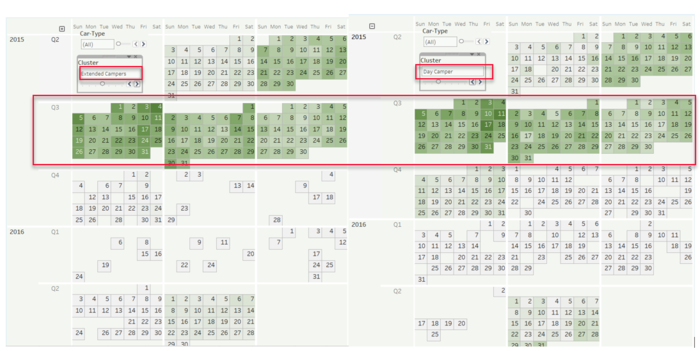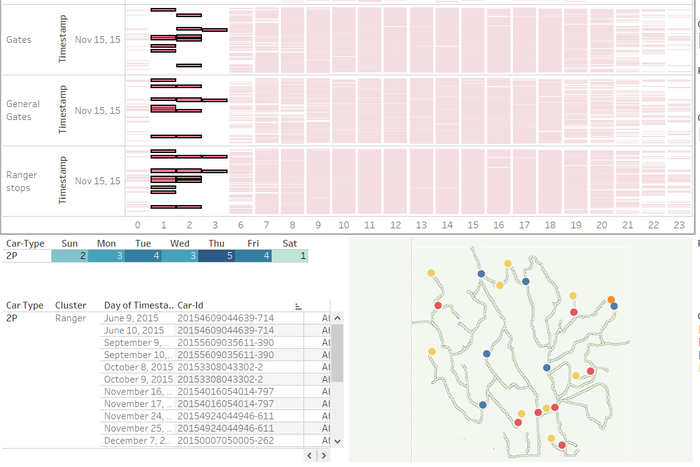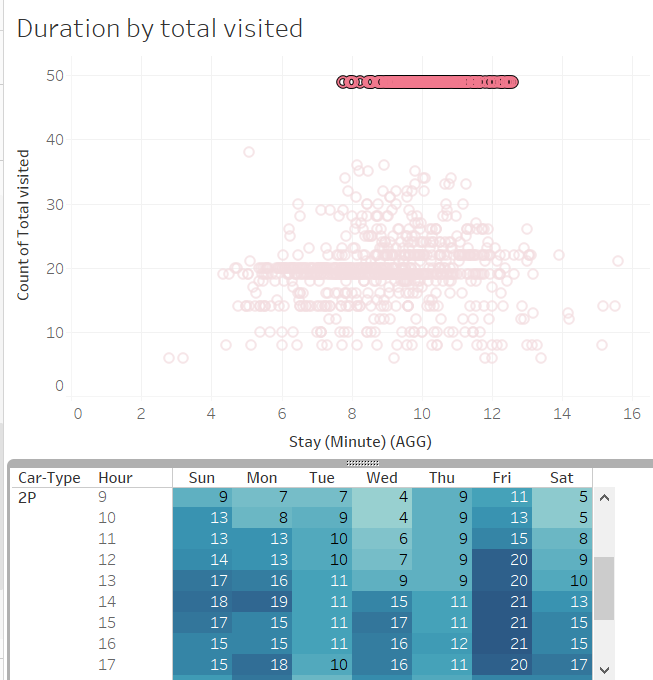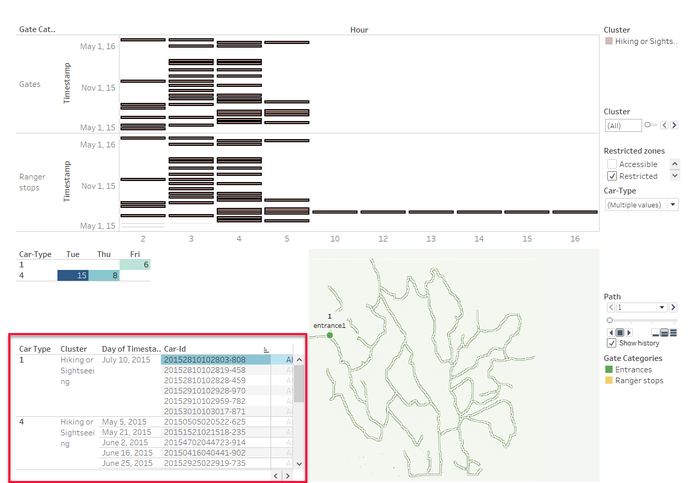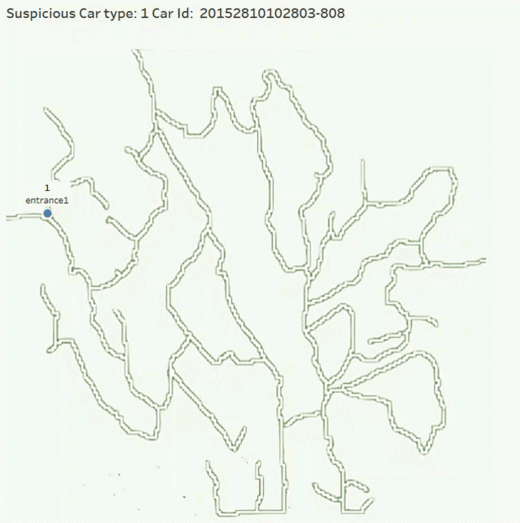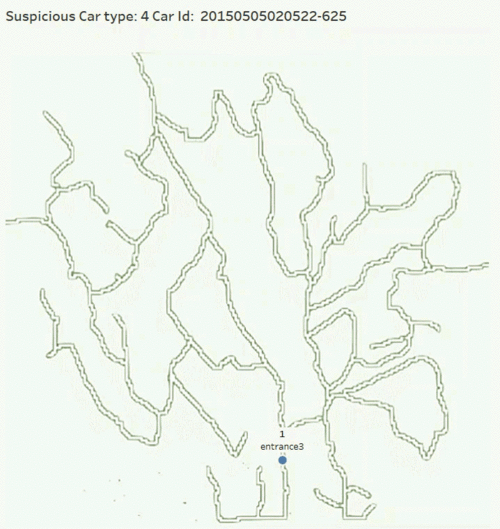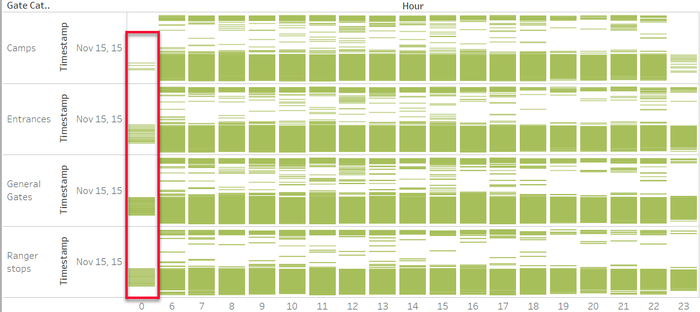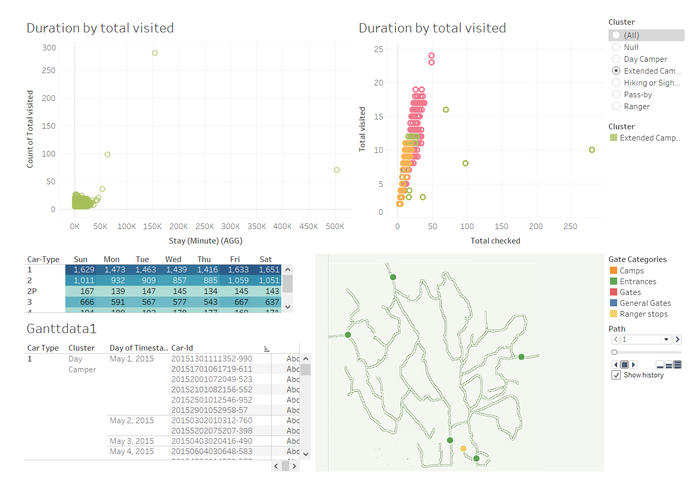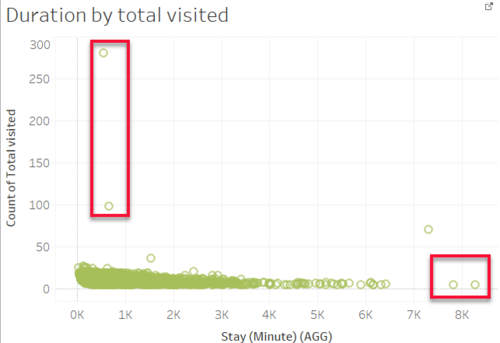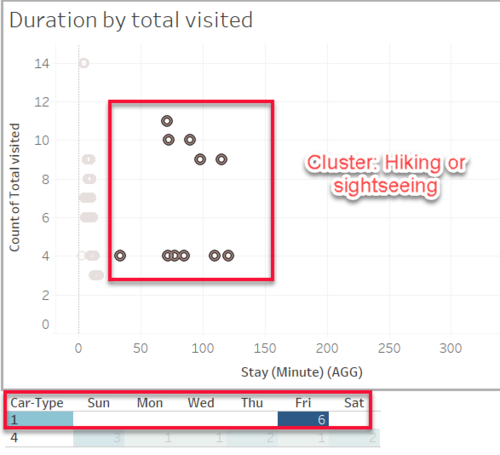ISSS608 2016-17 T3 Assign GUAN YIFEI Visualization
|
|
|
|
|
Viz & Insights
The Daily Trends
1. The "most scenic route" of the park
Looking at the sequence by gate categories, the most commonly path adopted by the tourists is general gate 2-rangerstop0-rangerstop2-general gate. The traffic it remains active throughout the night. It seems this is the most scenic path of the reserve, which serves as one of the most famous place of interest for the reserve.
The gif below shows how the size of the traffic moved along the most scenic path of the park over the day.
2.Day Campers
• Day campers enters the park from 5am, since they are not staying over in the park, they cleared from the park by 18:00 when the sky is getting darker.
• Looking at the distribution of the most traveled path by the day campers, they mostly visited one campsite out of the 9 campsites. 70% of them will visit the most scenic path of the reserve (general gate 2-rangerstop0-rangerstop2-general gate1) before moving to the various camps. The rest will head to the camps directly.Among which, camp3 and 6 are the most popular camps of their choices, it could be attributed by the fact that the camps are located nearer to the entrances. Accessibility could be one of the considerations for the day campers in choosing their campaign locations due to the limited time they have in the park.
3.Extended campers
• The day for extended campers starts a bit later than day campers, from 6am on-wards. The time of exit for the also spread over a longer time range to 23pm
• Unlike the day campers, they tend to visit more than one camp site, or drive around the same camp site (represented by the adjacent orange blocks in graph of path by general gates. Also, unlike the day campers, they tend to settle down at the more secluded camp sites like camp 5 and camp 8, to enjoy a quiet night of sleep.
4.Hiking or sightseeing
• The sightseeing guests stay active throughout the day, the night and even the year. They do not stop at any campsites, and a vast majority of them came to the park for the most scenic path of the reserve (general gate 2-rangerstop0-rangerstop2-general gate1). The choices of path for them also have less variety as compared to other types of tourists.The gif on the right shows that the path adopted by the sightseeing group remains relatively unchanged, regardless of their transportation choice.
•Beside the “pass-by” group of tourists, this is the only group which consists of tourists who came by car type 4,5,6. Those 3 types of cars are likely to be the school bus/tourists coaches which fetch the tourist to be entrances/main gates of the reserve.
5.Rangers
Unlike the tourists or campers, the day for rangers starts from the ranger base and ends there. Under the travel pattern for the rangers, there is normally only one or two variations on the paths adopted. This is most likely be attributed by the fact that they are working on shifts with fixed routes. The shifts start from 6am and normally ends at 20-22pm,more shifts are arranged in the afternoons. As observed from the travel patterns chart, the routes adopted by the rangers are longer with more check points visited.
The gif below illustrates the most popular routes adopted by the rangers.
6.The pass- by
They are the cars which pass through the reserve as a form of short cut. They do not visit any of the camps/general gates. They either move between entrance 2 and 4 or entrance 3 and 0.
The Longer Period Trends
1.The campers visit the reserve more often in May to Aug, possibly because this is the warm period of the year. There is a drastic drop in the campers, especially extended campers, from Q4 2015 onwards, which could be attributed to the colder weather. However, compared to the campers, the hiking and sightseeing groups tend to be less affected by weather.
2.Park rangers moving around the park at non-working hours on certain days, the path covered the entire reserve
3.The park rangers tend to cover the longer path for afternoon shifts (12pm to 17pm) on Fridays, probably due to the high number of tourists active at this time period
The Anomalies
The design
1.The Gantt chart shows all the activities in the reserve over the time span, one Gantt bar indicating one movement.
2.Filters allow the user to filter by restricted areas /car type/cluster
3.Select the suspicious bars to view the heat map distribution to confirm if the observation is within certain car type or happened on certain days of the week
4.Click on the interested area of the heatmap to view the detailed ID table
5.Click on the car ID to view its animated path
Observations:
1.A group of 6 cars (type 1) trespassing restricted area ranger stop 1, on 10 July 2015
2.Type 4 vehicle trespassing restricted areas 23 times on Tuesdays and Thursdays 2 to 5 am, following the same path
The gif below shows the paths adopted by the suspicious vehicles,the restricted gates are colored in red.
3.The same extended camper ( 20154519024544-322 ) active at various midnight continuously
Design 2, similar concepts to design 1 but focuses on the duration,gate checked and gate visited by each tourist.
• Total checked: the total number of stops each tourist went
• Total visited: the number of distinct stops each tourist went Car Type
Observations:
4.Abnormally high number of stops visited with low average duration
• Car-ID 20154519024544-322 visited total 281 stops in the park and stayed in the park from 19th Jun to 5th Oct (Extended camper). The same car ID appeared under observation 4.
• Car-ID 20154112014114-381 visited 98 stops and stayed from 14th Jun to 26th Jul (Extended camper)
5.Abnormally average duration in the reserve with low number of stops visited
• 20150105060134-242, 20150420100416-232 visited 4 checkpoints but stayed for over one month in the reserve (Extended camper)
6.Hiking or sightseeing visitors with abnormally long stay in the park (they are the same group of visitors observed in 1)

